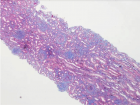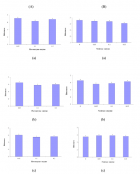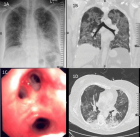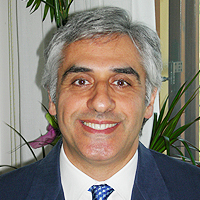Table of Contents
The effects of physiotherapy and rehabilitation on Pallister-Killian Syndrome: A case report
Published on: 20th December, 2018
OCLC Number/Unique Identifier: 7964755732
The aim of the paper is to determine the effects of physiotherapy and rehabilitation (PHTR) on a child with Pallister-Killian Syndrome (PKS). Gross Motor Function Measure (GMFM) and duration of grasping ping pong ball were the primary outcome measures which were conducted at the beginning, 12th, and 24th month. Neurodevelopmental Therapy and Sensory Integration Therapy were used as intervention methods. The most increase with around 50% was acquired in Section A of the GMFM. Duration of holding a ping pong ball gradually increased. As a result, this is the first paper presenting a PHTR shedule and its results in a child with PKS.
Role of physical activity in cancer survival and recurrence: A narrative review from relationship evidence to crucial research perspectives
Published on: 12th December, 2018
OCLC Number/Unique Identifier: 7964792160
Purpose: The benefits of Physical Activity (PA) considered as a major supportive care in cancer patients, on survival, and recurrence risk is largely disseminated in public communication. However, these data must be taken with caution. The main objectives were to review the evidence and limits of studies reported regarding the post-diagnosis PA role on cancer survival and recurrence risk to secondly discuss of research perspectives on PA programs.
Method: The narrative review included all published or ongoing studies in English during the last 20 years related to PA, survival and recurrence risk with a systematic search on main databases.
Results and discussion: The current evidences regarding the PA role on survival and recurrence risk were only based on cohort studies, mainly in breast cancer. The major methodological limits identified as the lack of PA change assessment, PA level assessed largely by self-reported methods and the significant inter- but also intra- variability make the interpretation of data very. Beyond the use of rigorous RCT, the major issue is to develop adapted and personalized interventions to progressively increase PA level overtime in cancer survivors.
Conclusion: Despite the lack of causal relationship between post-diagnosis PA, survival and recurrence risk, the review underlines several interesting research perspectives. The future PA interventions, using innovative tools and integrated to the “real-life” will argued for the potential antitumoral PA role growing in literature.
Contractions of athlete’s foot and its muscle oxygenation
Published on: 5th December, 2018
Sustained isometric contractions of skeletal muscles produce intramuscular pressures that leads to blood flow restriction. In result an active muscle feels deficit of oxygen what bring to muscle fatigue. In another side during exercise we have physiological contradiction between raising of oxygen demand by working muscle and restriction of blood flow due to vessel pressing. To clarify this issue many research has been performed based mainly on measurement of blood flow in muscle tissue. The purpose of this study was to assess real-time changes in muscle oxygenation during a sustained isometric contractions of dorsiflexor muscle of low (30%), moderate (60%) and submaximal (90%) intensity. Experiments were conducted using the subject’s dominant (right) leg. Volunteers was recruited from eight male students of USIPC (age: 19±2 years, weight: 75±6 kg). Tissue oxygenation index (StO2) were recorded from the tibialis anterior using NIRS device (NONIN). Saturation was higher at 30% compared with both 60% and 90% MVC at all time points after start exercise and higher at 60% than 90%. Oxygen consumption (VO2) permanently increased from slow (30%) to moderate (60%) and submaximal contractions. After cessation of the each contraction there was a large and immediate hyperemic response. Rate of StO2 increasing after effort cessation what reflects the resaturation of hemoglobin which depend on integrity and functionality of vascular system and reflects blood vessel vasodilation. StO2 restoration rate permanently increased from slow (30%) to moderate (60%) and submaximal contractions too. At last on final stage of experiment arterial occlusion test has been performed to determine the minimal oxygen saturation value in the dorsiflexors. Oxygen saturation reached a 24±1.77% what is significantly higher than StO2 after 60 and 90%MVC.
So, we can conclude that oxygen saturation at 60% and 90% MVC are similar and sharply decreased after start of exercise. It means that after 60% MVC take place occlusion of blood vessels due to intramuscular pressure. Oxygen consumption of active muscle increased depend on intensity of exertion according to increasing of oxygen demand. StO2 resaturation rate (Re) permanently increased from slow (30%) to moderate (60%) and to submaximal contractions. Re increasing after effort cessation reflects the resaturation of hemoglobin which depend on integrity and functionality of vascular system and reflects blood vessel vasodilation.
Final solution in femoroacetabular impingement - Threaded cups in hip revision surgery 2002-2012
Published on: 23rd October, 2018
OCLC Number/Unique Identifier: 7900083791
Purpose: Here, we report the complications of endoprosthesis with threaded cups according to our application in cases of complicated acetabulum (hip revisions and femoroacetabular impingement (FAI)).
Methods: A total of 504 patients was analyzed, including 189 men and 315 women. For re-implanted patients (n = 49), the mean time to re-implantation was 6.3 years and the average age at re-implantation was 54.7 years. For censored patients (n = 455), the mean time to censoring was 5.5 years and the average age of the implant was 55.7 years. Among the patients that were censored, 77 died and 378 patients did not experience an event necessitating re-implantation.
Results: For the total study population, the Kaplan-Meier estimate of 5 year survival is 0.94 and of 10 year survival is 0.85. 90% of the implants survived 7 years, 80% of the implants survived almost 12 years and 70% of implants survived almost 15 years. Kaplan-Meier survival analysis suggests that men have higher survival than women. Age of the patient at the time of implant was not a statistically significant factor for re-implantation (p value = 0.21) but sex was (p value = 0.02). Women had 2.25 times more risk of being re-implanted than men.
Conclusions: In our case series, the failure rate, as a result of aseptic loosening, was 7.4% (n = 51). More than half the failure cases (56%) required re-implantation. Over one-third (37%) of the primary arthrosis cases, were found to be FAI, lessening the frequency of diagnosis of the former. In our clinic, the threaded cup seems to be indispensable in hip revision surgery and in treating FAI.
Analysis of static, dynamic, and pelvic stability in junior badminton players of South Asia
Published on: 19th October, 2018
OCLC Number/Unique Identifier: 7893702351
Badminton is a sport that requires a player to perform while being still, as well as in motion. Stability is the ability to maintain or control joint movement or joint position, in the static as well as dynamic state. Improvement in stability could help maintain body control and proper posture positions during play. Accordingly, the study was proposed to analyze stability in junior badminton players and understand its importance. A total of 106 players from South Asia between the ages of 8 and 15 years were analyzed. Prokin 252N and Balance trunk MF systems of Tecnobody Italy were used in the assessment and static, dynamic, and pelvic stability was recorded. The variables used were gender, age, body mass index, and experience in years, level at which they play, current pain, and clicks & catches in the past 1 year. Our study showed that there was significant difference in pelvic stability in terms of age and level at which players compete. There were a variety of other factors which do not affect stability. There needs to be a greater focus on stability training as part of the development of junior badminton players.

HSPI: We're glad you're here. Please click "create a new Query" if you are a new visitor to our website and need further information from us.
If you are already a member of our network and need to keep track of any developments regarding a question you have already submitted, click "take me to my Query."


























































































































































